Lightning Safety: Weathering the Storm with Ease
When the skies darken and the thunder begins to rumble, it’s easy to feel a sense of unease. Thunderstorms, while awe-inspiring, can bring with them a dangerous companion: lightning. Understanding how to stay safe during these electrifying displays of nature is crucial. This article discusses essential tips and best practices for staying safe during thunderstorms, emphasizing the importance of preparedness and awareness to minimize risks associated with lightning strikes. By learning about lightning, debunking myths, and knowing what to do when storms approach, you can weather the storm with ease.
Lightning is a fascinating natural phenomenon that occurs when there’s a buildup of electrical energy in the atmosphere. This energy can result in a brilliant flash of light that is not only visually stunning but also incredibly powerful. To truly appreciate the dangers associated with thunderstorms, it’s essential to understand how lightning forms. It typically occurs in three main types: cloud-to-ground, cloud-to-cloud, and intra-cloud lightning. Each type has its own unique characteristics and potential risks. By gaining insight into these aspects, you can better recognize the dangers and take appropriate safety measures during severe weather.
There are numerous myths surrounding lightning and its behavior. It’s easy to fall prey to these misconceptions, especially during a storm when adrenaline is high. One common belief is that lightning never strikes the same place twice. This is, in fact, a myth! Lightning can and does strike the same location multiple times, especially if it’s a tall structure like a skyscraper or a tree. Understanding these myths can help you make informed decisions when thunderstorms roll into your area.
Let’s dive deeper into some prevalent myths about lightning:
- Myth 1: Lightning only strikes during thunderstorms.
- Myth 2: If it’s not raining, you’re safe from lightning.
- Myth 3: You can outrun lightning.
These misconceptions can lead to dangerous situations. For example, many people believe that they are safe if they are indoors during a storm, but lightning can still strike buildings and cause injury. Being aware of these myths can save lives!
Examining statistics about lightning strikes reveals the frequency and locations of strikes, emphasizing the importance of taking lightning safety seriously. According to the National Weather Service, an average of 20 million lightning strikes occur in the United States each year. That’s a staggering number! Furthermore, approximately 30 people are killed by lightning strikes annually, with hundreds more suffering from injuries. These numbers underscore the need for vigilance during thunderstorms and highlight why understanding lightning safety is essential.
Understanding the physical and psychological effects of lightning strikes on individuals can underscore the necessity of adhering to safety protocols during storms. The immediate effects of a lightning strike can include burns, cardiac arrest, and neurological damage. Moreover, survivors often experience long-term psychological effects, such as anxiety and post-traumatic stress disorder. This knowledge should motivate everyone to take lightning safety seriously and prepare accordingly.
Implementing effective lightning safety tips can significantly reduce the risk of injury during thunderstorms. Here are some practical measures to take when severe weather approaches:
- Monitor weather forecasts and alerts.
- Seek shelter indoors at the first sign of a storm.
- Avoid using wired electronics during a storm.
- Stay away from windows and doors.
By following these guidelines, you can keep yourself and your loved ones safe when the storm clouds gather.
Identifying safe locations to seek shelter during thunderstorms is crucial for personal safety. The best places to stay protected from lightning include:
- Inside a sturdy building.
- A fully enclosed vehicle.
- Designated storm shelters.
It’s important to avoid open fields, isolated trees, and bodies of water, as these are high-risk areas for lightning strikes.
Discussing essential indoor safety precautions can help ensure a safer environment during a storm. Avoid using electrical appliances, as they can conduct electricity if lightning strikes your home. Additionally, staying away from windows reduces the risk of injury from flying debris or shattered glass. Remember, safety is the priority!
For those caught outside during a thunderstorm, there are vital outdoor safety measures to minimize the risk of lightning strikes while waiting for the storm to pass. If you’re unable to reach a safe location, crouch down with your feet together and cover your head. This position minimizes your contact with the ground and reduces the risk of a lightning strike.
Preparing for thunderstorms includes having an emergency plan and necessary supplies. This section emphasizes the importance of readiness in ensuring safety during severe weather events. Make sure you have a weather radio, first aid kit, flashlight, and extra batteries readily available. Knowing what to do before, during, and after a storm can make all the difference in keeping you and your family safe.
Q: What should I do if I’m outside during a thunderstorm?
A: Seek shelter immediately. If you can’t reach a building, crouch down with your feet together and cover your head.
Q: Can I use my phone during a lightning storm?
A: Avoid using wired phones and electrical appliances. If you need to use a phone, use a mobile device.
Q: How can I prepare for lightning storms?
A: Monitor weather forecasts, have an emergency plan, and keep an emergency kit stocked with essential supplies.
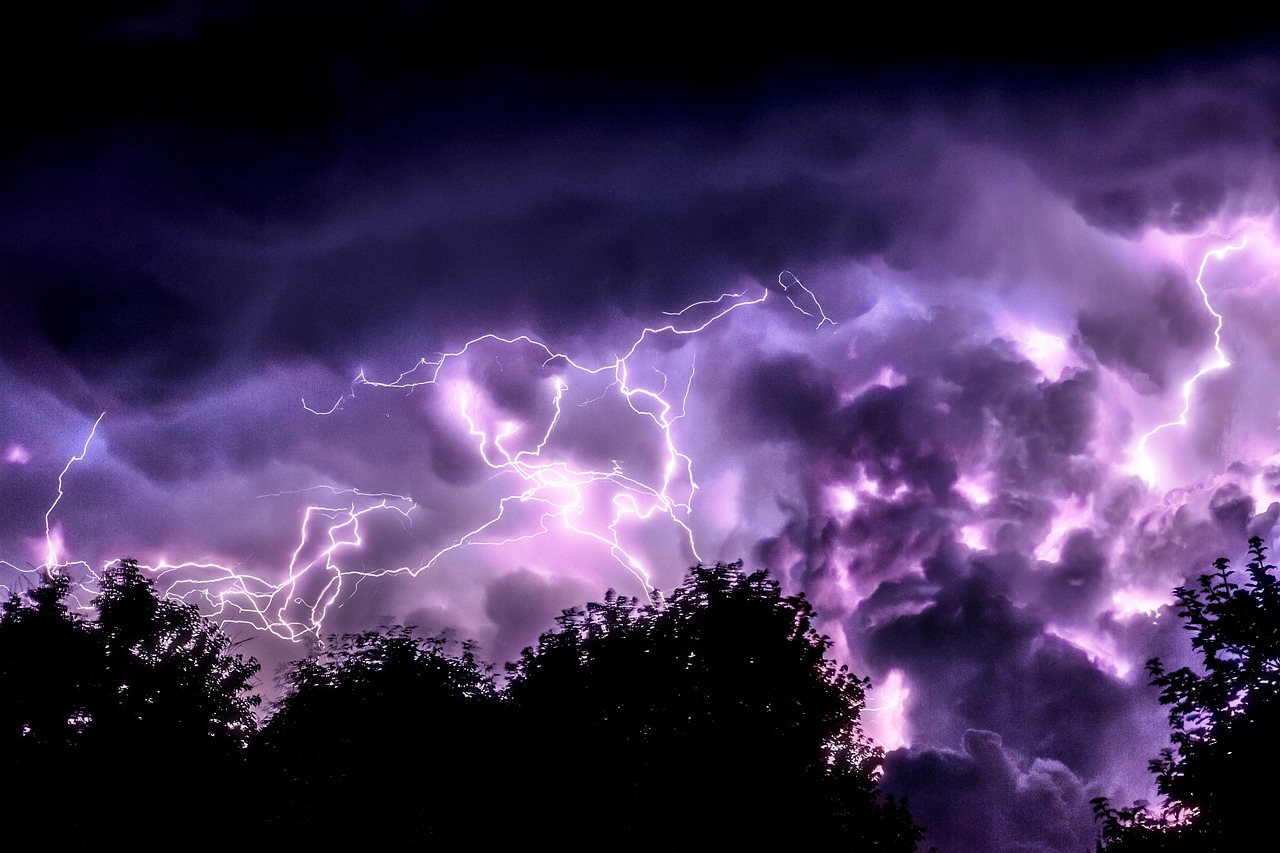
Understanding Lightning
Lightning is one of nature's most awe-inspiring phenomena, a brilliant display of electrical energy that can strike fear into the hearts of many. But what exactly is lightning? At its core, lightning is a giant spark of electricity in the atmosphere between clouds, the air, or even between the ground and the clouds. This spectacular event occurs when there is an imbalance of electrical charges within a storm cloud or between the cloud and the ground. The process starts with the formation of ice particles and water droplets within the cloud, which collide and create static electricity. As the storm develops, these charges build up until they can no longer be contained, resulting in a sudden discharge of energy—lightning!
There are several types of lightning, each with its unique characteristics. The most common type is cloud-to-ground lightning, which is what most people think of when they hear the term "lightning." It occurs when a negatively charged step leader descends from the cloud and connects with a positively charged object on the ground. However, there are also intra-cloud lightning, which happens within a single cloud, and cloud-to-cloud lightning, which occurs between two separate clouds. Each type poses its own risks, and understanding these can help us appreciate the need for safety during thunderstorms.
Now, let's talk about the dangers associated with lightning. Did you know that lightning can strike the same place multiple times? Contrary to popular belief, this is not just a myth. In fact, tall structures like skyscrapers, radio towers, and trees are frequently struck by lightning. According to the National Weather Service, about 30 people are killed by lightning strikes each year in the United States alone, with hundreds more suffering from serious injuries. This makes it crucial to take lightning safety seriously.
To further illustrate the significance of lightning safety, consider the following statistics:
| Year | Number of Lightning Strikes | Casualties |
|---|---|---|
| 2020 | 20 million+ | 30 deaths |
| 2021 | 25 million+ | 27 deaths |
| 2022 | 22 million+ | 29 deaths |
Understanding the physical and psychological effects of lightning strikes is equally crucial. Survivors of lightning strikes often experience a range of long-term effects, including memory loss, sleep disorders, and even neurological damage. The shock of the strike can also lead to psychological trauma, making it essential to adhere to safety protocols during storms. So, when the sky darkens and the thunder rumbles, remember that being informed about lightning can save lives and keep you safe.
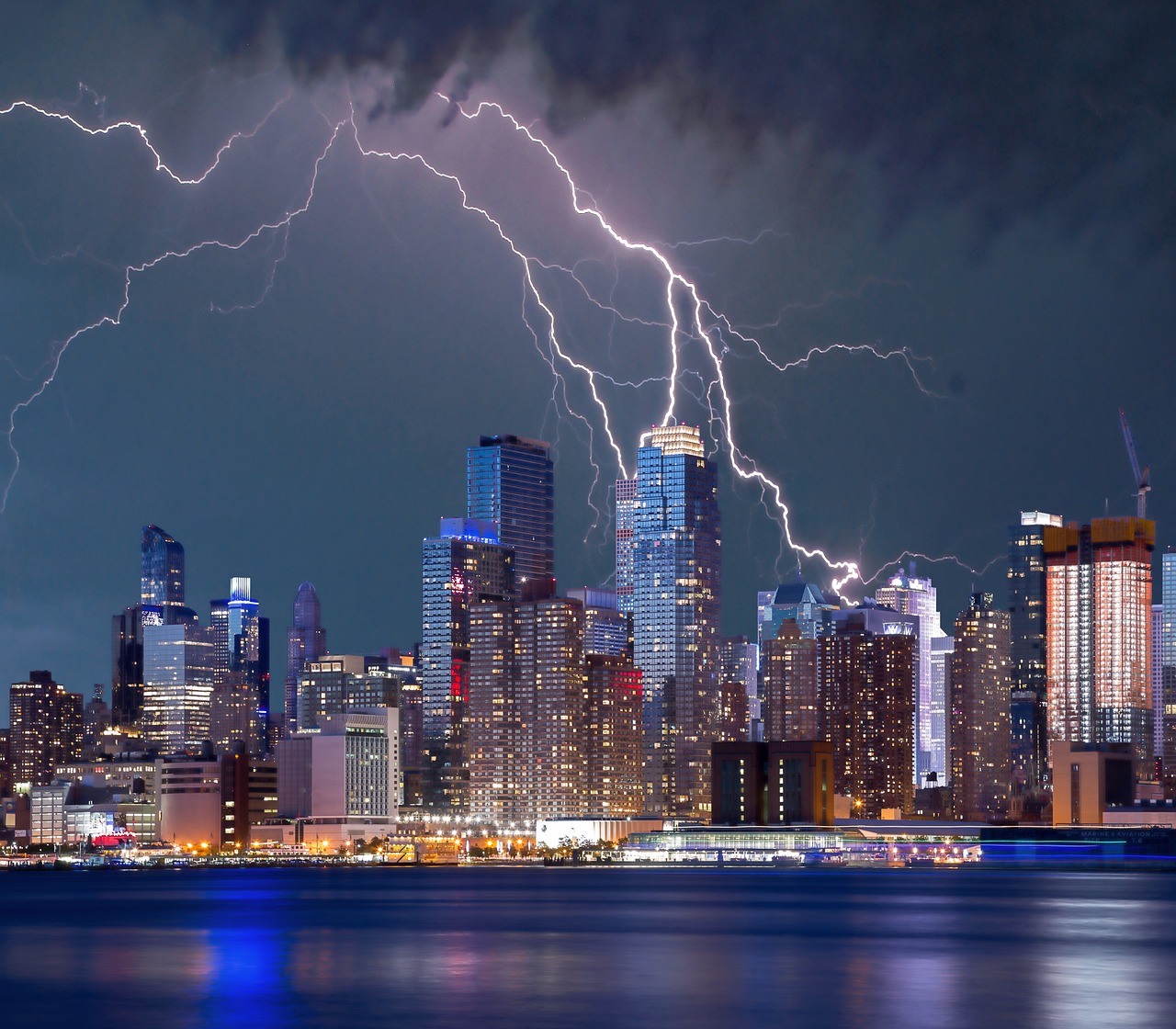
Lightning Myths Debunked
When it comes to thunderstorms, there are a plethora of myths and misconceptions that can lead to dangerous situations. Understanding the truth about lightning is crucial for staying safe during storms. For instance, many people believe that lightning never strikes the same place twice. This is far from the truth! In reality, tall structures like skyscrapers and radio towers can be struck multiple times. Just think about it: if you were a bolt of lightning looking for a tall, conductive object, wouldn’t you want to hit the same spot again and again?
Another common myth is that you are safe if you are under a tree. This is a dangerous misconception! While it might seem like a good idea to seek shelter from rain under a tree, it can actually increase your risk of being struck by lightning. Trees can conduct electricity, and when lightning strikes a tree, the energy can travel down to the ground, putting anyone nearby at risk. Instead of seeking refuge under a tree, it's better to find a solid building or a car.
Let’s also address the belief that lightning only occurs during rain. Lightning can actually strike even when the sky is clear! This phenomenon is known as “bolt from the blue,” and it can catch people off guard. So, if you hear thunder, it’s a good idea to take cover, regardless of whether you see rain or not. Being prepared is the best defense against the unpredictable nature of thunderstorms.
To further clarify these myths, here are some facts that debunk these common misconceptions:
- Myth: Lightning never strikes the same place twice.
- Fact: Lightning can and does strike the same place multiple times, especially in areas prone to thunderstorms.
- Myth: You are safe under a tree during a storm.
- Fact: Seeking shelter under a tree can be extremely dangerous as trees can attract lightning.
- Myth: Lightning only occurs during rain.
- Fact: Lightning can strike in clear skies, so it’s important to stay vigilant.
Understanding these myths is essential for anyone living in areas prone to thunderstorms. It’s not just about knowing the facts; it’s about internalizing them and applying them in real-life situations. The more informed you are, the better prepared you will be to make safe decisions when a storm rolls in. So, the next time you hear thunder, remember these truths, and don’t let myths put you at risk!
Q: What should I do if I’m caught outside during a thunderstorm?
A: If you’re caught outside, seek shelter immediately in a sturdy building or a car. Avoid tall objects like trees and open fields.
Q: Is it safe to use my phone during a thunderstorm?
A: Using a landline phone during a storm can be dangerous due to lightning strikes. However, using a mobile phone is generally considered safe as long as you are indoors.
Q: How can I prepare for a thunderstorm?
A: Stay informed about the weather, create an emergency plan, and have supplies like flashlights, batteries, and a first aid kit ready.
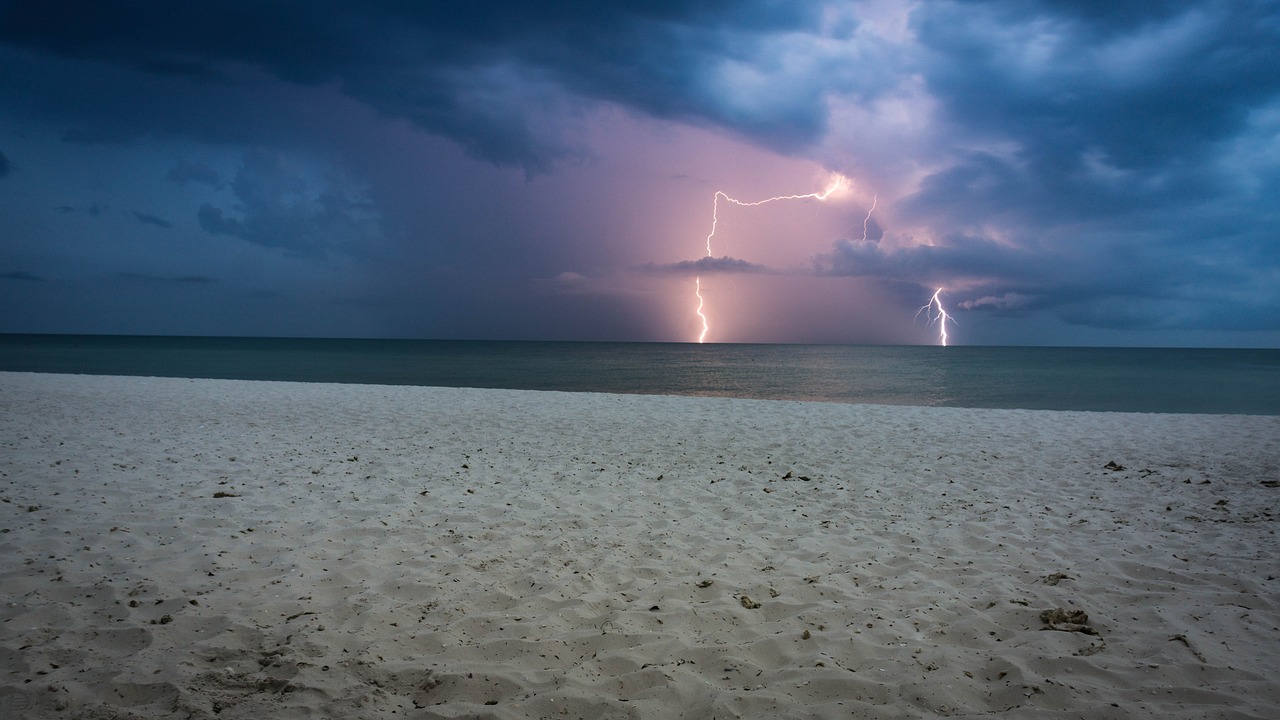
Common Misconceptions
When it comes to lightning, there are plenty of misconceptions that can lead to dangerous situations during a storm. One of the most prevalent myths is that lightning never strikes the same place twice. This is far from the truth! In fact, many tall structures, such as skyscrapers and radio towers, are struck multiple times during a single storm. Understanding this can help you realize that being in a high-risk area, like near a tall tree or a metal pole, increases your chances of being struck.
Another common belief is that you are safe if you’re indoors. While it’s true that being inside a building is generally safer than being outside, there are still risks. For example, using wired electronics or standing near windows can expose you to lightning’s wrath. It’s crucial to remember that lightning can travel through plumbing and electrical systems. Thus, being indoors does not guarantee safety if you’re not careful.
Many people also think that if the storm is far away, they’re in the clear. However, lightning can strike up to 10 miles away from a storm! This is often referred to as the “bolt from the blue,” where lightning can reach out and surprise those who think they are safe. It’s essential to pay attention to the weather and take action even if you don’t see rain or hear thunder.
To further clarify these misconceptions, let’s take a look at some important facts:
- Lightning can strike multiple times in the same location.
- Being inside a building is safer, but certain activities can still be hazardous.
- Lightning can travel significant distances from the storm.
Understanding these common misconceptions is vital for your safety. By recognizing the real nature of lightning and its unpredictable behavior, you can take the necessary precautions to protect yourself during thunderstorms. Remember, knowledge is power, especially when it comes to staying safe during severe weather!
Q: Can lightning strike the same place more than once?
A: Yes, lightning can and often does strike the same location multiple times, especially if it's a tall structure.
Q: Is it safe to use my phone during a thunderstorm?
A: It’s best to avoid using wired phones and electronic devices, as lightning can travel through electrical systems.
Q: How far away can lightning strike?
A: Lightning can strike up to 10 miles away from a storm, which is why it’s important to seek shelter early.
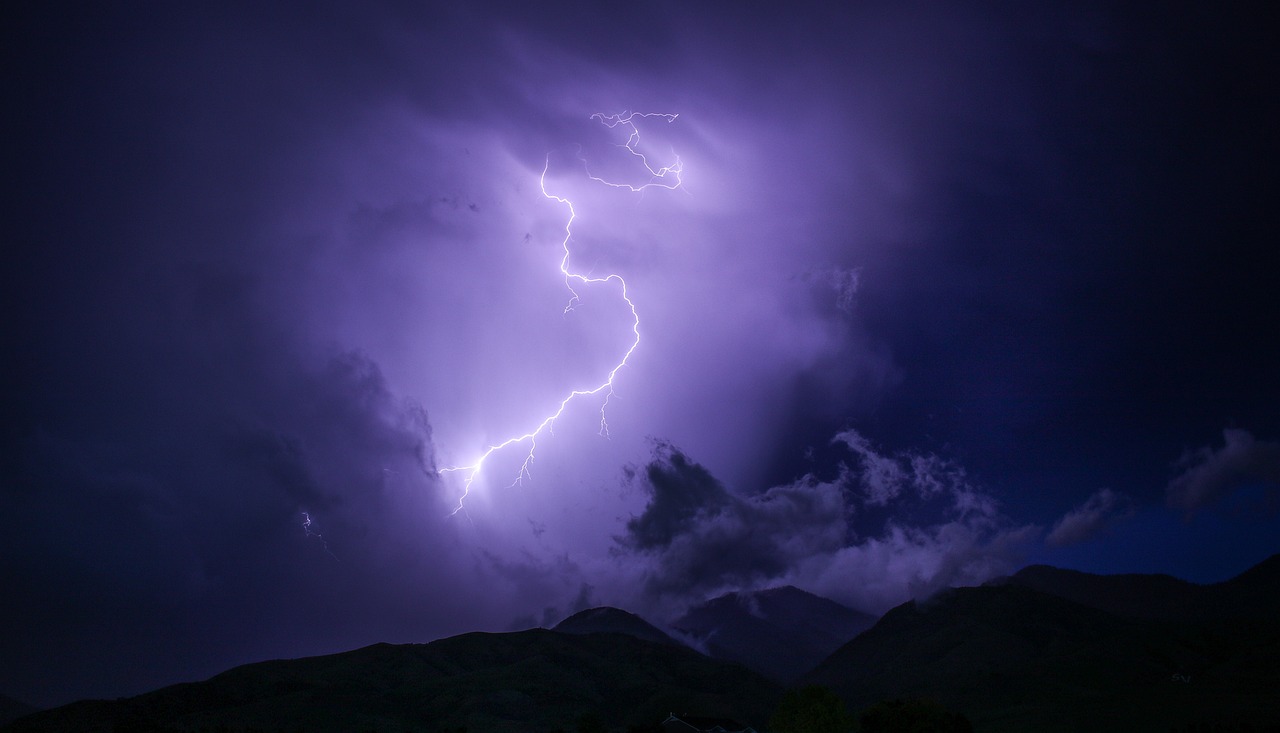
Lightning Strike Statistics
Understanding is crucial for grasping the severity and frequency of lightning-related incidents. Each year, thousands of people are affected by lightning strikes, with the National Weather Service (NWS) reporting that approximately 20 million lightning strikes occur in the United States alone. This staggering number highlights the importance of being aware of lightning safety measures, especially during thunderstorms.
Interestingly, many people believe that lightning is a rare occurrence, but the reality is quite different. According to the National Oceanic and Atmospheric Administration (NOAA), an average of 20 to 30 people are killed by lightning strikes annually in the U.S., while hundreds more suffer life-altering injuries. These statistics serve as a wake-up call, emphasizing the need for preparedness and awareness during stormy weather.
To provide a clearer picture, let's take a look at the following table showcasing lightning strike statistics over the past few years:
| Year | Fatalities | Injuries | Total Strikes |
|---|---|---|---|
| 2019 | 23 | 344 | 20 million |
| 2020 | 17 | 300 | 25 million |
| 2021 | 29 | 200 | 22 million |
| 2022 | 14 | 250 | 23 million |
As shown in the table, the number of fatalities and injuries varies each year, but the underlying message remains the same: lightning is a serious threat. The majority of lightning strikes occur during the summer months, particularly in the afternoon and evening when thunderstorms are most likely to develop. This seasonal pattern means that individuals living in areas prone to thunderstorms must stay vigilant, especially during these months.
Moreover, the geographical distribution of lightning strikes is not uniform. Certain regions, such as the Florida Peninsula, experience a higher frequency of strikes due to their unique climate and weather patterns. In fact, Florida is often referred to as the "Lightning Capital of the U.S." This information is vital for residents and visitors alike, as understanding local lightning patterns can significantly enhance personal safety during storms.
In conclusion, lightning strike statistics reveal not only the frequency of these dangerous events but also the need for proactive safety measures. By being informed and prepared, individuals can reduce their risk of being caught in a lightning storm. Remember, when thunder roars, go indoors!
- What should I do if I see lightning? Seek shelter indoors immediately and avoid using electrical appliances.
- Can lightning strike the same place twice? Yes, lightning can and often does strike the same place multiple times, especially tall structures.
- How can I stay safe outdoors during a storm? Look for low-lying areas to avoid being the tallest object and avoid trees.

Effects of Lightning Strikes
When we think of thunderstorms, we often picture the dramatic flashes of lightning illuminating the sky. However, the extend far beyond just a spectacular light show. Lightning is a powerful natural phenomenon that can lead to serious injuries and even fatalities. Understanding these effects is crucial for appreciating the importance of lightning safety.
First and foremost, the most immediate effect of a lightning strike is the potential for severe injury or death. According to the National Weather Service, approximately 20% of people struck by lightning do not survive, while those who do often suffer from long-term health issues. These can include neurological damage, memory loss, and other cognitive impairments. Imagine being struck by a bolt of electricity that can carry up to 30 million volts; the sheer force can cause your heart to stop or lead to burns on your skin.
Moreover, the physical effects of a lightning strike can manifest in various ways. Some common injuries include:
- Burns: Lightning can cause severe burns, often in a pattern called Lichtenberg figures, which resemble tree-like designs on the skin.
- Cardiac Arrest: The electrical shock can disrupt the heart's rhythm, leading to cardiac arrest.
- Nerve Damage: Lightning strikes can damage nerves, resulting in loss of sensation or mobility.
- Psychological Effects: Survivors may experience PTSD, anxiety, or depression following their traumatic experience.
In addition to the physical injuries, lightning strikes can also have psychological impacts. Survivors may find themselves grappling with anxiety or fear of thunderstorms long after the storm has passed. The trauma of being struck can lead to a heightened sense of vulnerability, making it essential for individuals to seek help if they find themselves struggling with these feelings.
Another often-overlooked effect of lightning strikes is the impact on the environment. Lightning can ignite wildfires, especially in dry conditions, leading to destruction of vast areas of land and wildlife habitats. Furthermore, lightning strikes can cause power outages and damage to electrical infrastructure, resulting in disruptions that can affect entire communities.
In summary, the effects of lightning strikes are far-reaching and can have devastating consequences. Whether it’s physical injuries, psychological trauma, or environmental damage, understanding these effects underscores the importance of adhering to lightning safety protocols. Remember, when you hear thunder, it’s time to take cover and protect yourself from the storm.
Q: Can you survive a lightning strike?
A: Yes, many people do survive lightning strikes, but they may experience severe injuries and long-term health issues.
Q: What should I do if someone is struck by lightning?
A: Call emergency services immediately. While waiting for help, check for breathing and pulse, and perform CPR if necessary.
Q: How can I protect myself from lightning?
A: Seek shelter indoors, stay away from windows, and avoid using electrical appliances during a storm.
Q: Is it safe to be in a car during a lightning storm?
A: Yes, being inside a car is generally safe as long as you stay away from metal parts and do not touch the steering wheel during a storm.

Lightning Safety Tips
When it comes to thunderstorms, being prepared is your best defense against the unpredictable nature of lightning. Imagine you're at a picnic, enjoying the sun, when suddenly the sky darkens. What do you do? The first step is to always stay alert to weather forecasts, especially during storm season. Knowing when a storm is approaching can give you the precious time needed to seek shelter and ensure safety. But that’s just the beginning!
One of the most crucial is to identify safe locations ahead of time. If you’re indoors, steer clear of windows and doors. It might be tempting to watch the storm from your living room window, but those beautiful views can quickly turn dangerous. Instead, find a room in the middle of your home, away from any exterior walls. If you can, avoid using corded phones and electrical appliances. Yes, we all love our gadgets, but during a storm, they can become conduits for lightning strikes. You wouldn’t want to become a lightning rod, would you?
For those caught outdoors, the situation can be a bit trickier. If you hear thunder or see lightning, it's time to take action. Seek shelter immediately. A sturdy building is your best bet, but if that’s not available, get into a vehicle. Surprisingly, cars can offer protection due to their metal frames. Just remember to keep the windows closed and avoid touching metal surfaces inside the vehicle. If you're in a wide-open area with no shelter in sight, crouch down with your feet together and your head tucked. This position minimizes your height and reduces the risk of a direct strike.
Another important aspect of lightning safety is understanding that certain locations are more dangerous than others during a storm. Avoid open fields, elevated terrains, and water bodies. If you’re on a golf course or a beach, it’s time to leave those clubs or towels behind and find a safe spot. The same goes for tall trees; while they might seem like a refuge, they can attract lightning. Instead, look for lower ground and stay away from anything that can conduct electricity.
Lastly, it’s essential to have a lightning safety plan in place. Discuss with your family where to go and what to do during a storm. Make sure everyone knows the safest spots in your home and how to stay connected if you’re separated. Having a plan not only keeps you safe but also provides peace of mind during those stormy nights.
- What should I do if I’m caught outside during a thunderstorm? - Seek shelter immediately, preferably in a sturdy building or vehicle. If none are available, crouch down low with your feet together.
- Can I use my phone during a thunderstorm? - It's best to avoid using corded phones and electrical appliances during a storm. Cell phones are generally safe to use, but stay away from charging them.
- What are the signs of an approaching thunderstorm? - Darkening skies, increased wind, and distant thunder are all indicators that a storm is on its way.
- Is it safe to stay in my car during a lightning storm? - Yes, staying in your car is generally safe as long as you keep the windows closed and avoid touching metal surfaces.
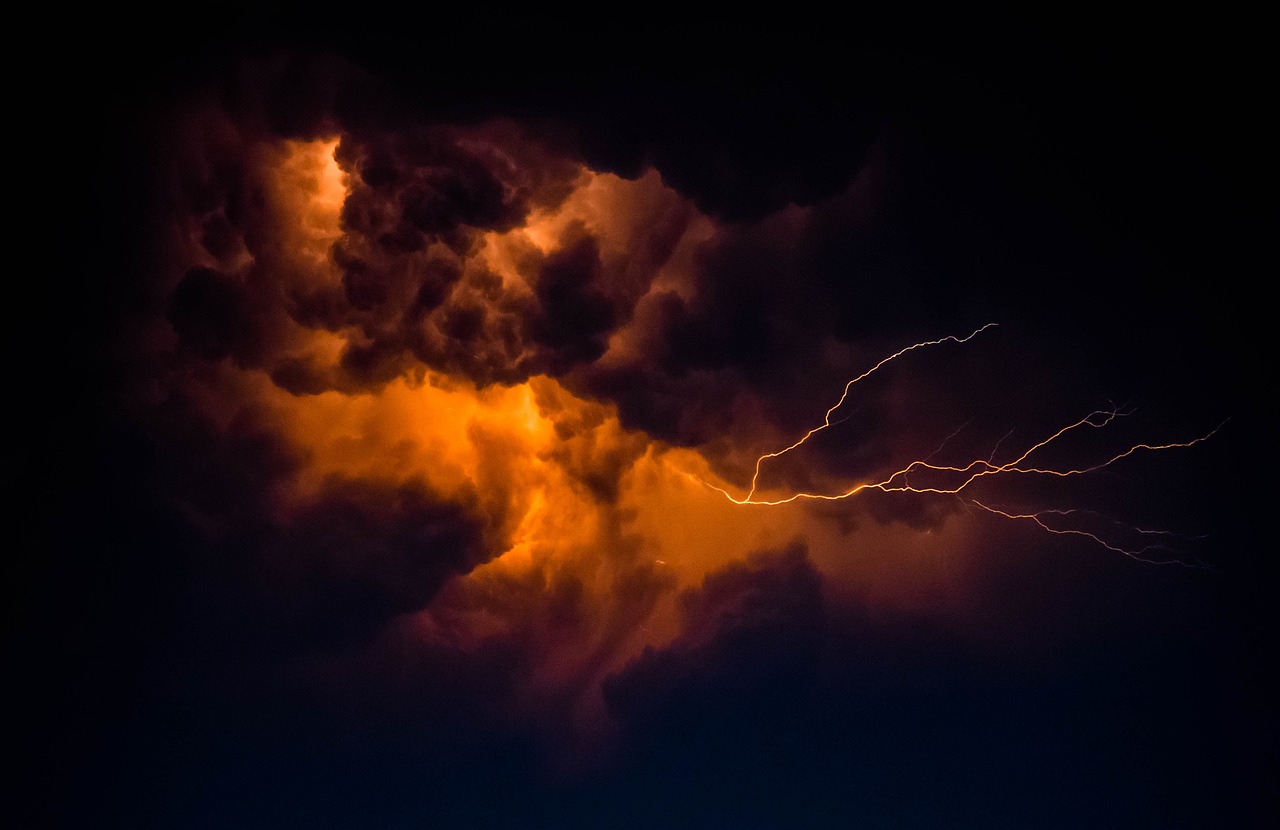
Safe Locations During Storms
When the skies darken and the thunder rolls in, knowing where to seek shelter can be the difference between safety and danger. It’s crucial to identify safe locations during thunderstorms, as lightning can strike unpredictably and with devastating effects. So, where should you head when the storm clouds gather? Let’s explore the best places to stay protected from lightning and other storm-related hazards.
First and foremost, the indoors is your safest bet. Whether you’re at home, in a building, or at a public facility, being inside significantly reduces your risk of being struck by lightning. However, not all indoor locations are created equal. It’s essential to stay away from windows, doors, and anything that conducts electricity. This includes avoiding the use of wired electronics like phones and computers. Instead, consider using battery-operated devices to stay updated on the storm’s progress.
If you find yourself outdoors when a storm strikes, your options may seem limited, but there are still ways to protect yourself. Look for substantial shelters such as:
- Buildings with a solid roof and walls
- Cars (but avoid touching metal parts)
- Low-lying areas like ditches, but only as a last resort
Remember, trees and other tall structures may seem like a good place to wait out a storm, but they can attract lightning. Instead, if you’re caught in an open area, crouch down with your feet together, minimizing your contact with the ground.
It’s also important to have a plan in place for where to go during a storm. If you live in an area prone to severe weather, consider mapping out nearby safe locations ahead of time. This could include friends’ houses, community centers, or even designated storm shelters. Knowing these places can save precious time when the weather turns dangerous. Additionally, having a go-bag with essentials like water, snacks, and a flashlight can help you stay prepared.
To further enhance your safety, familiarize yourself with the weather alerts in your area. Many regions have systems in place that provide real-time updates on storm conditions. Utilize apps or websites that offer notifications about severe weather, so you can act quickly when necessary. Remember, preparation is key!
In summary, when thunderstorms roll in, your safety should be the top priority. By knowing where to seek shelter, avoiding hazardous locations, and being prepared, you can weather the storm with greater peace of mind. Stay safe, stay informed, and don’t hesitate to take action when the skies threaten!
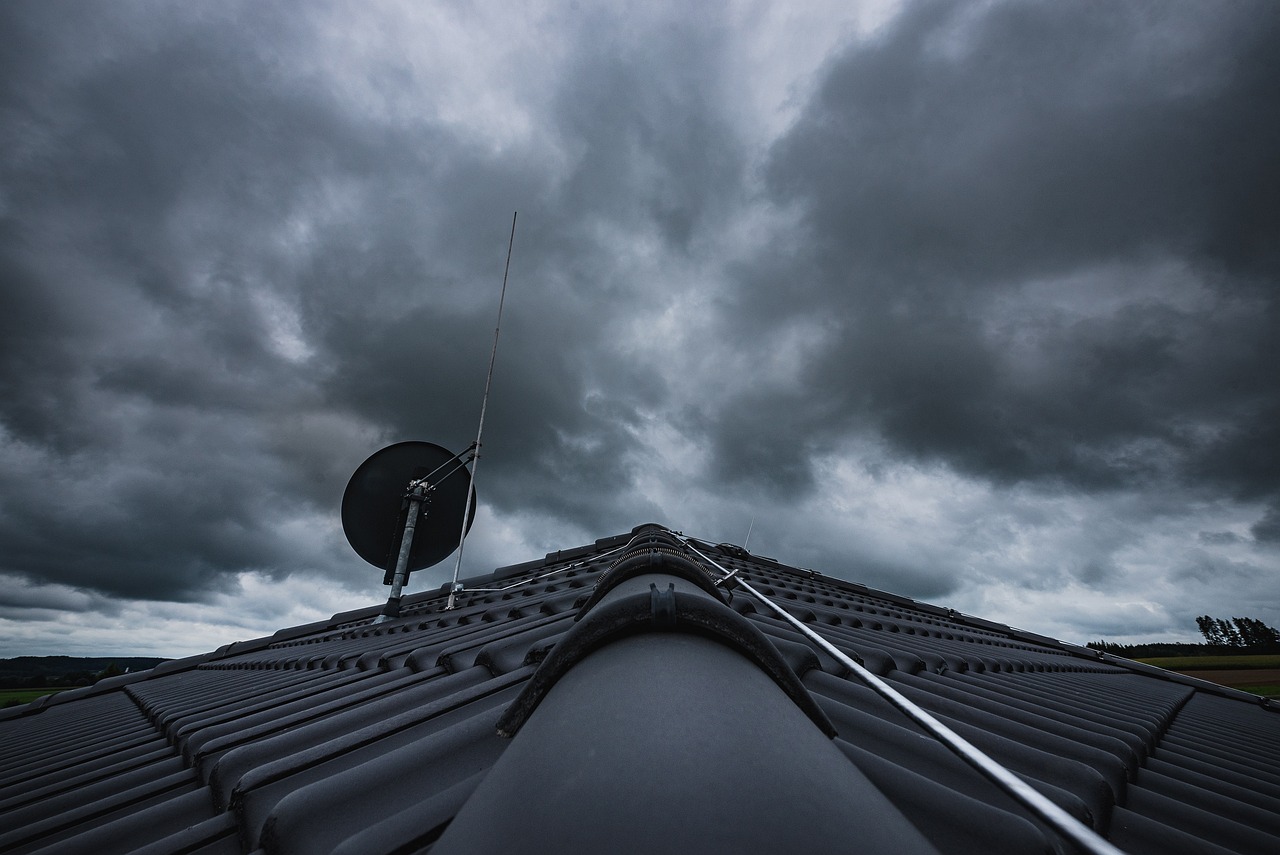
Indoor Safety Precautions
When a thunderstorm rolls in, the first instinct might be to grab your favorite blanket and curl up on the couch. While that sounds cozy, it’s crucial to remember that thunderstorms can bring dangerous lightning strikes. To stay safe indoors, there are several precautions you should take. First and foremost, it’s essential to stay away from windows. The last thing you want is to be near glass when the storm is raging outside. Not only can strong winds shatter windows, but flying debris can also pose a serious risk.
Another important safety tip is to avoid using electrical appliances during a storm. This includes everything from your television to your computer. Lightning can cause power surges that may damage your devices or, worse, lead to electrical shock. Instead of binge-watching your favorite show, consider engaging in a fun indoor activity that doesn’t involve electronics—like reading a book or playing board games with family. This not only keeps you safe but also makes for a great bonding experience!
It's also wise to avoid plumbing fixtures. Yes, that means no showers or baths while the thunder is rumbling. Why? Because lightning can travel through metal pipes, and if you're in contact with water, you could be at risk. So, if you're caught in a storm, hold off on those household chores that require water. Stay dry and safe!
In addition to these precautions, having a designated safe room in your home can be a lifesaver. This room should be away from windows and ideally located in the center of your house. It’s a good idea to keep emergency supplies in this room, including a flashlight, first aid kit, and some non-perishable snacks. You never know how long a storm might last, and being prepared can make all the difference.
Lastly, stay informed about the storm’s progress by using a battery-operated weather radio or your phone, but avoid plugging in your devices during the storm. This way, you can receive updates without risking an electrical surge. Always remember, staying calm and prepared is the key to weathering the storm safely!
- What should I do if I hear thunder while I’m outside? Seek shelter immediately in a sturdy building or vehicle. Avoid trees and open fields.
- Is it safe to use my phone during a storm? Yes, but avoid using a landline phone. Mobile phones are generally safe, but make sure to stay away from windows.
- Can lightning strike a house? Yes, lightning can and does strike homes. That’s why taking precautions is essential.
- How can I prepare my home for thunderstorms? Ensure your home has surge protectors, and consider installing lightning rods for added protection.
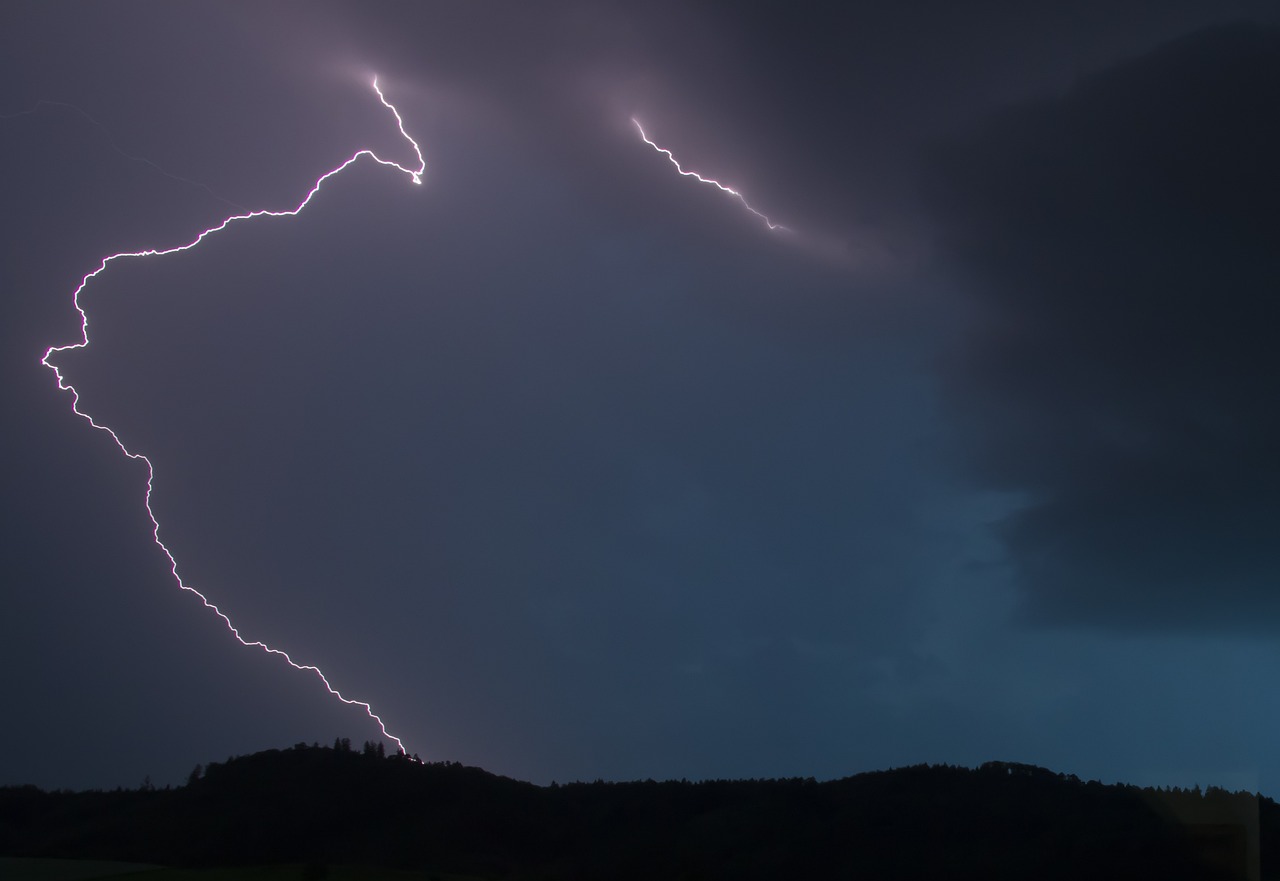
Outdoor Safety Measures
When caught outdoors during a thunderstorm, your safety becomes the top priority. First and foremost, it's essential to recognize the signs of an impending storm. Darkening skies, distant thunder, and flashes of lightning are clear indicators that it's time to seek shelter. But where should you go? The best course of action is to find a sturdy building. If that’s not possible, a car can provide a safer alternative. Remember, being in an open field or under a tree is a risky choice, as these locations are prime targets for lightning strikes.
While seeking shelter, avoid standing near tall objects like trees, poles, or any other structures that could attract lightning. Instead, look for low-lying areas, such as ditches or depressions, to minimize exposure. If you're with a group, spread out to reduce the risk of multiple injuries from a single strike. It's also crucial to avoid water, as lightning can travel through it, making swimming or wading in lakes and pools extremely dangerous during a storm.
Here’s a quick checklist to keep in mind when you find yourself outdoors during a thunderstorm:
- Seek shelter immediately in a building or vehicle.
- Avoid open fields and isolated trees.
- Stay away from water and wet areas.
- Spread out if in a group to minimize risk.
In case you are unable to find immediate shelter, there are some additional precautions you can take. Crouching down in a tight ball, with your feet together, can help reduce your risk of being struck. However, this should only be a last resort. Always prioritize finding a safe structure. Remember, the goal is to minimize your exposure to the elements while ensuring that you remain as low to the ground as possible without lying flat, which can increase your risk of being hit.
Finally, it’s essential to have a plan in place before storms hit. Familiarize yourself with the safest locations in your area and consider carrying a portable weather radio or a smartphone app that provides real-time alerts. Being prepared and knowing what to do can make a significant difference in ensuring your safety during thunderstorms.
Q: What should I do if I can't find shelter during a thunderstorm?
A: If you can't find shelter, crouch down in a low-lying area, keeping your feet together and minimizing your contact with the ground. Avoid lying flat, as this increases your risk of being struck.
Q: Are there any places I should avoid during a thunderstorm?
A: Yes, avoid open fields, isolated trees, water bodies, and any structure that is not properly grounded, such as picnic shelters or tents.
Q: Can lightning strike the same place twice?
A: Absolutely! Lightning can and does strike the same place multiple times, especially if that location is a tall or conductive structure.
Q: How can I stay informed about approaching thunderstorms?
A: Utilize weather apps on your smartphone, listen to a portable weather radio, or check local news for real-time updates on severe weather.
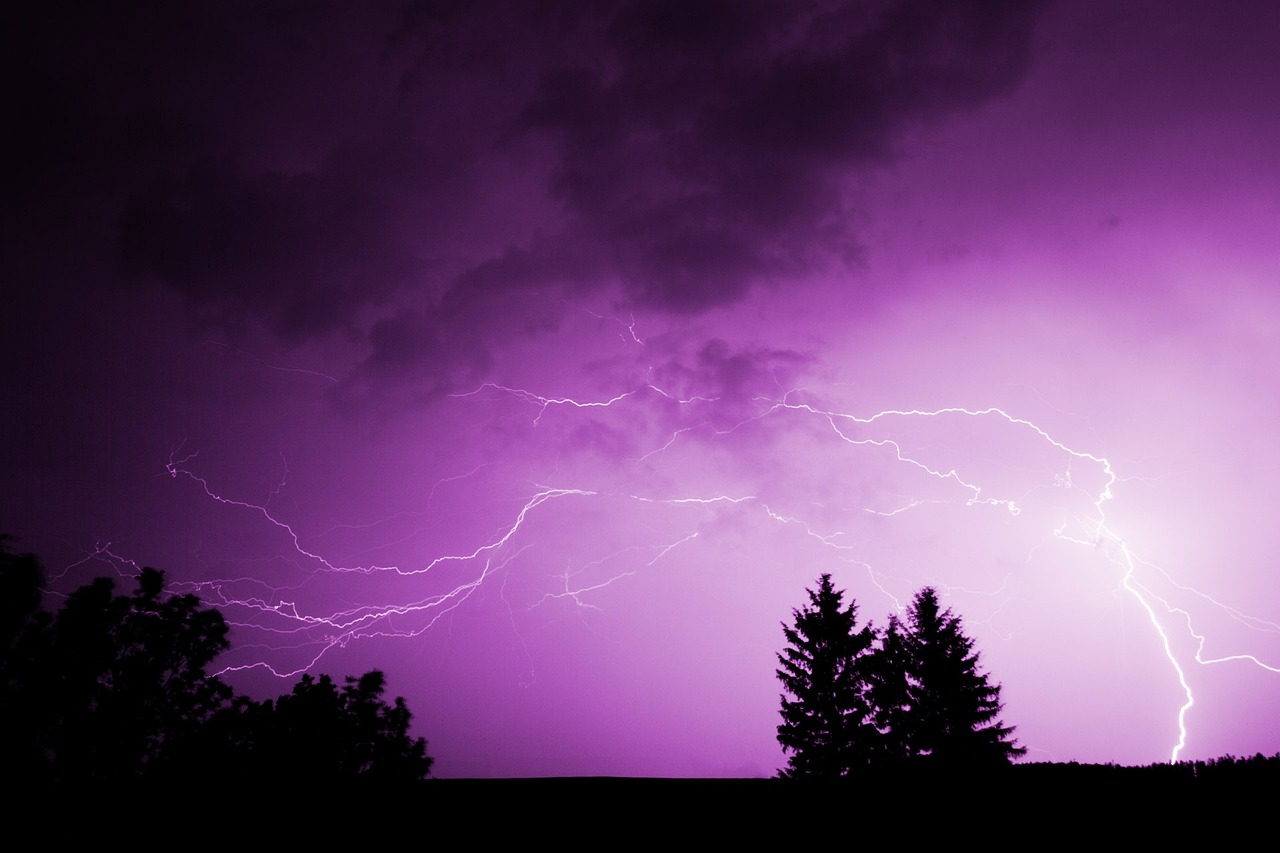
Emergency Preparedness
When it comes to thunderstorms, being prepared can make all the difference between a harrowing experience and a safe one. Think of it like having an umbrella on a rainy day; you may not need it every time, but when you do, you'll be grateful you had it. The key to effective lies in planning ahead and having the right supplies on hand. First and foremost, it’s essential to have an emergency plan that everyone in your household understands. This plan should outline where to go for safety, how to communicate during a storm, and what to do if someone gets separated.
In addition to having a plan, assembling an emergency kit is crucial. This kit should contain items that will help you weather the storm comfortably and safely. Here’s a quick rundown of what your emergency kit should include:
- Flashlights and extra batteries: Power outages are common during thunderstorms, so having a reliable light source is essential.
- First aid supplies: Accidents can happen, and being able to address minor injuries is vital.
- Non-perishable food: Stock up on snacks and meals that don’t require cooking, as you may be without power.
- Water: Aim for at least one gallon of water per person per day for at least three days.
- Portable phone chargers: Keeping your devices charged can be a lifesaver when you need to communicate.
But don't stop there! It's also wise to stay informed about the weather. Nowadays, there are countless apps and websites that provide real-time updates on storm conditions. By keeping an eye on the forecast, you can make informed decisions about when to seek shelter. Additionally, consider signing up for local alerts that inform you of severe weather warnings in your area. This way, you won't be caught off guard when the skies darken.
Finally, practicing your emergency plan can help everyone feel more comfortable and confident when a storm hits. Just like a fire drill, knowing what to do can reduce panic and confusion. Gather your family, review your plan, and even simulate a storm scenario. This proactive approach can turn a potentially scary situation into a manageable one.
Q: How can I ensure my family is prepared for a thunderstorm?
A: Start by creating an emergency plan and assembling an emergency kit with essential supplies. Regularly review your plan with your family, and keep an eye on weather alerts.
Q: What should I do if I’m outside during a thunderstorm?
A: Look for shelter immediately, preferably indoors. If that’s not possible, avoid tall objects and find a low-lying area to minimize your risk of being struck by lightning.
Q: Are there specific items I should include in my emergency kit?
A: Yes, your emergency kit should include flashlights, batteries, first aid supplies, non-perishable food, water, and portable phone chargers, among other essentials.
Frequently Asked Questions
- What should I do if I hear thunder?
If you hear thunder, it’s a sign that lightning is nearby. Immediately seek shelter indoors, preferably in a sturdy building or a vehicle. Avoid staying in open areas, as this increases your risk of being struck by lightning.
- Can I use my phone during a thunderstorm?
While it’s safe to use a corded phone, avoid using landline phones and electrical appliances during a thunderstorm. Instead, rely on mobile phones for communication, as long as you are not plugged into a wall charger.
- Is it safe to stay in a car during a lightning storm?
Yes, being inside a car is one of the safest places to be during a lightning storm. The metal frame of the car acts as a Faraday cage, directing the electrical charge around the occupants and into the ground.
- What are some common myths about lightning?
One common myth is that lightning never strikes the same place twice. In reality, lightning can and does strike the same location multiple times, especially tall structures like skyscrapers or trees.
- How can I prepare for a thunderstorm?
Preparation is key! Have an emergency kit ready, which includes essentials like water, non-perishable food, a flashlight, batteries, and a first-aid kit. Also, create an emergency plan with your family so everyone knows what to do when a storm hits.
- What are the signs of an impending thunderstorm?
Look for darkening skies, increasing winds, and a noticeable drop in temperature. If you see flashes of lightning or hear thunder, it’s time to take cover!
- Are there specific places I should avoid during a storm?
Avoid open fields, hilltops, and isolated trees. Also, steer clear of water bodies, as they can attract lightning. Finding shelter in a well-constructed building is your best bet.
- What should I do if I’m caught outside during a storm?
If you’re caught outside, try to find a low-lying area, such as a ditch, to minimize your risk. Crouch down with your feet together, and keep your head tucked to reduce your height and contact with the ground.



















